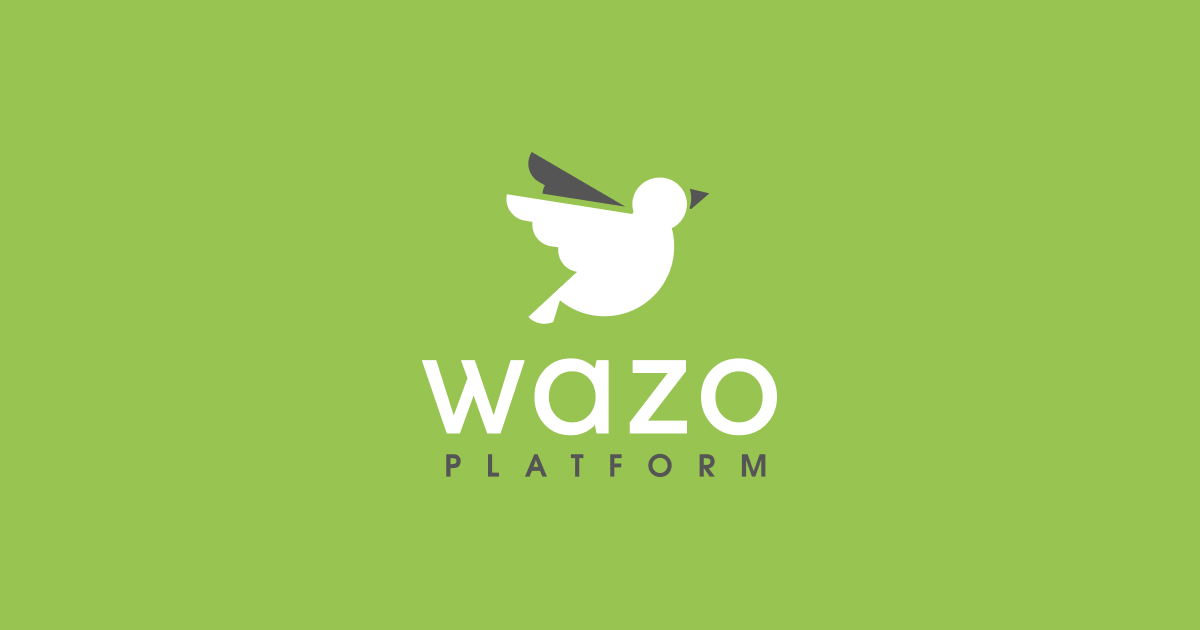Overview
Discover what makes Wazo Platform powerful
Wazo Platform is a modular, carrier‑grade communication stack that lets developers assemble an IP telephony infrastructure from open‑source building blocks. At its core it stitches together **Asterisk** for media handling, **RTPEngine** and **Kamailio** for SIP routing, while a lightweight service mesh built on **RabbitMQ**, **NGinx**, and **PostgreSQL** provides orchestration, persistence, and scalability. The platform is intentionally API‑first: every micro‑service exposes a **REST** endpoint, a **WebSocket** stream, or a **Webhook** hook, all documented via **OpenAPI**. This design enables rapid integration with front‑end clients (WebRTC), mobile SDKs, or third‑party billing and analytics services.
Language & Frameworks
Media Core
Messaging & Orchestration
Data Layer
Overview
Wazo Platform is a modular, carrier‑grade communication stack that lets developers assemble an IP telephony infrastructure from open‑source building blocks. At its core it stitches together Asterisk for media handling, RTPEngine and Kamailio for SIP routing, while a lightweight service mesh built on RabbitMQ, NGinx, and PostgreSQL provides orchestration, persistence, and scalability. The platform is intentionally API‑first: every micro‑service exposes a REST endpoint, a WebSocket stream, or a Webhook hook, all documented via OpenAPI. This design enables rapid integration with front‑end clients (WebRTC), mobile SDKs, or third‑party billing and analytics services.
Technical Stack & Architecture
- Language & Frameworks: Python 3 with Flask‑style micro‑services, asynchronous event loops (Celery + RabbitMQ) for background processing.
- Media Core: Asterisk 18+ (PJSIP), RTPEngine for media relays, Kamailio as the SIP proxy/router.
- Messaging & Orchestration: RabbitMQ for inter‑service communication; NGinx acts as reverse proxy, TLS terminator, and load balancer.
- Data Layer: PostgreSQL for relational data (contacts, call logs), Redis (optional) for caching and session storage.
- Containerization: Each component is distributed as a Docker image; the official
docker‑composestack supports local dev and production deployments. - Deployment Models: Can run on bare metal, virtual machines, or Kubernetes (Helm charts available). Horizontal scaling is achieved by replicating micro‑services and leveraging RabbitMQ’s clustering.
Core Capabilities & APIs
- Programmable Telephony: Voice and video calls, conference bridges, IVR flows, call recording, voicemail, and chat.
- Event Streaming: WebSocket endpoints for real‑time call state, media events, and analytics.
- REST CRUD: Endpoints for provisioning extensions, managing contacts, routing rules, and billing records.
- Webhooks: Push notifications for call events, voicemail arrivals, or SMS deliveries.
- SDKs & Libraries: Official JavaScript SDK for WebRTC clients; community‑maintained bindings exist for Python, Go, and Node.js.
Deployment & Infrastructure
- Self‑Hosting: Requires a Linux host with Docker and sufficient CPU/memory for Asterisk.
- Scalability: Stateless micro‑services can be scaled horizontally; media engines benefit from SRTP passthrough and load balancing.
- High Availability: RabbitMQ clustering, PostgreSQL replication, and NGinx HAProxy provide fault tolerance.
- Observability: Prometheus metrics exposed by each service; Grafana dashboards pre‑configured for call latency, queue depth, and SIP registration health.
Integration & Extensibility
- Plugin Architecture: Developers can drop new micro‑services into the ecosystem; they automatically register with RabbitMQ and expose OpenAPI specs.
- Third‑Party Hooks: Seamless integration with billing systems (e.g., OpenBilling), AI services (Speech‑to‑Text, sentiment analysis), or CRM platforms.
- Custom SIP Triggers: Kamailio’s Lua scripting allows fine‑grained routing and authentication logic.
- Webhooks & Callbacks: External services can subscribe to events via secure HTTPS endpoints, enabling real‑time workflows.
Developer Experience
- API‑First Documentation: Swagger UI and Redoc interfaces auto‑generate from OpenAPI specs; interactive testing is built in.
- Community & Support: Active GitHub repo with issue tracking, Slack channel, and regular release notes.
- Configuration: YAML/JSON files for each micro‑service; environment variables override defaults.
- Extensibility: Clear separation of concerns makes adding new features (e.g., a custom IVR) straightforward without touching core code.
Use Cases
- Enterprise PBX Replacement – Replace legacy on‑prem SIP trunks with a fully programmable, cloud‑ready platform.
- Contact Center – Build a scalable call center with dynamic queue management, agent routing, and real‑time analytics.
- SaaS Telephony API – Expose voice and video capabilities to customers via REST/WebRTC while handling billing internally.
- IoT & M2M Communications – Use SIP over WebSockets for low‑latency machine‑to‑machine interactions in smart factories.
Advantages Over Alternatives
- Open Source Core: No vendor lock‑in; all components (Asterisk, Kamailio) are community‑maintained.
- Modular Design: Pick only the services you need—no monolithic bloat.
- Performance & Flexibility: Native SIP handling with Asterisk, low‑latency media routing via RTPEngine.
- Licensing: Completely free under AGPL; suitable for both internal tools and public services.
- Rapid Development: API‑first approach means front‑end developers can iterate without waiting for backend changes.
Wazo Platform delivers a production‑grade, extensible telephony stack that empowers developers to build custom communication solutions quickly while retaining full control over the underlying infrastructure.
Open SourceReady to get started?
Join the community and start self-hosting Wazo Platform today
Related Apps in apis-services
Mastodon
Decentralized, real‑time social networking
Discourse
Open‑source community forum platform with real‑time chat and AI
Rocket.Chat
Secure, open‑source team communication platform
Novu
Unified notification platform for multi‑channel delivery
Mattermost
Secure, self‑hosted team collaboration with chat, voice, and AI
Jitsi Meet
Free, encrypted video conferencing for everyone
Weekly Views
Repository Health
Information
Explore More Apps
Stringer
Self-hosted anti-social RSS reader

Moodle
Open‑source LMS for online learning and course management
MistServer
Open‑source OTT streaming toolkit for developers
Backdrop CMS
Easy‑to‑use, performance‑focused content management
Pastefy
Share code snippets securely and effortlessly
Fork Recipes
Elegant recipe manager for the modern kitchen
